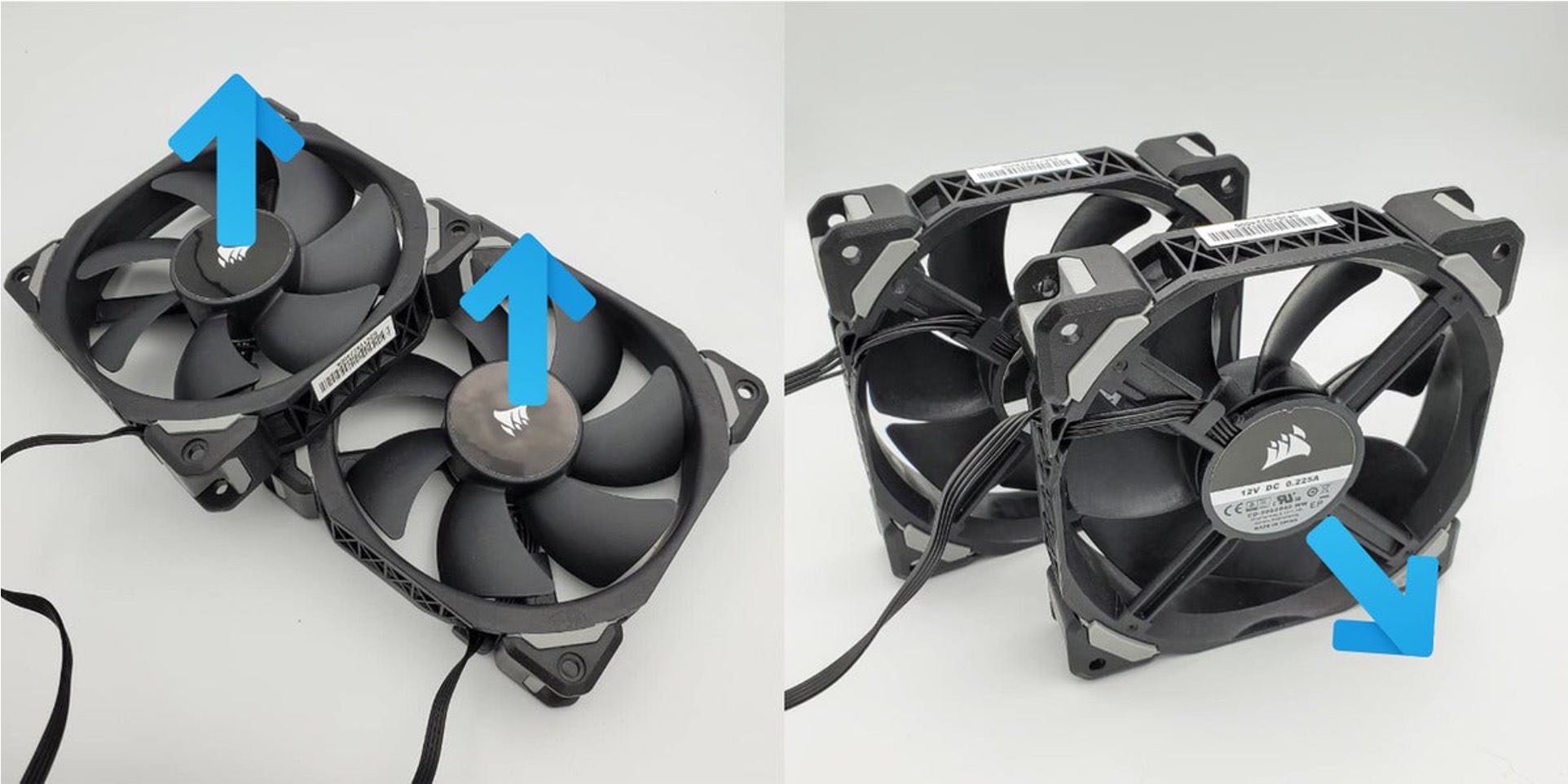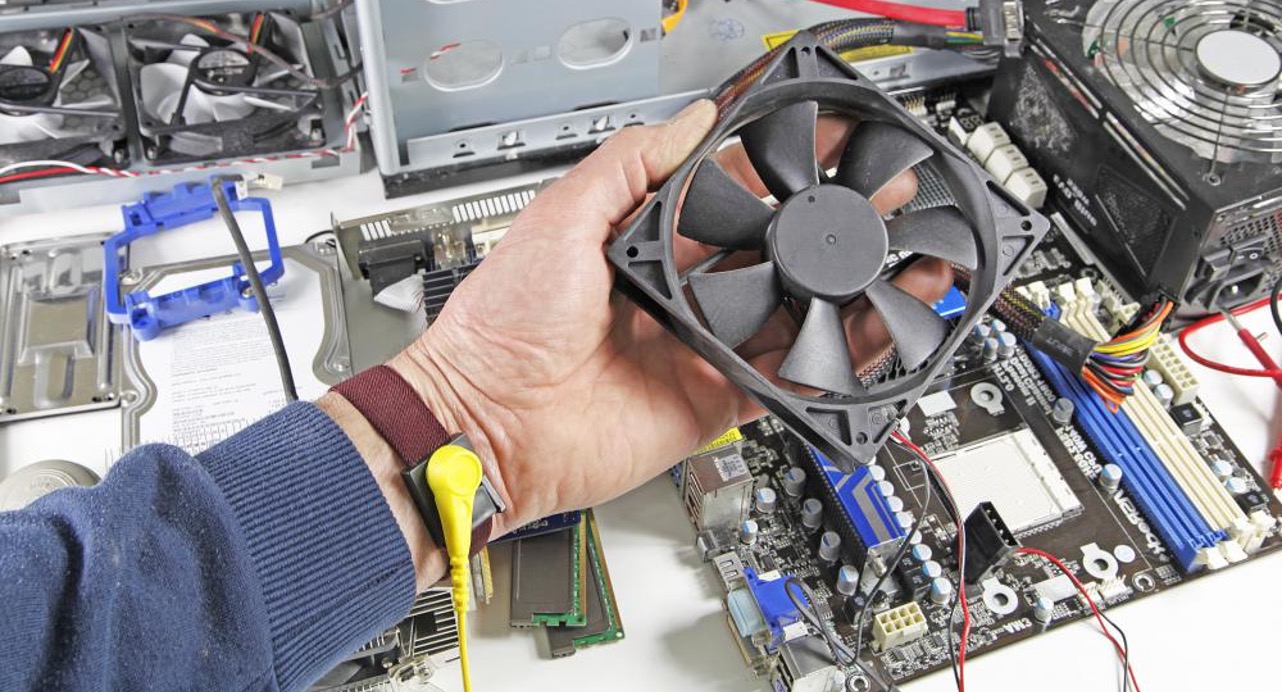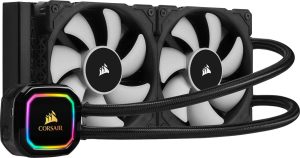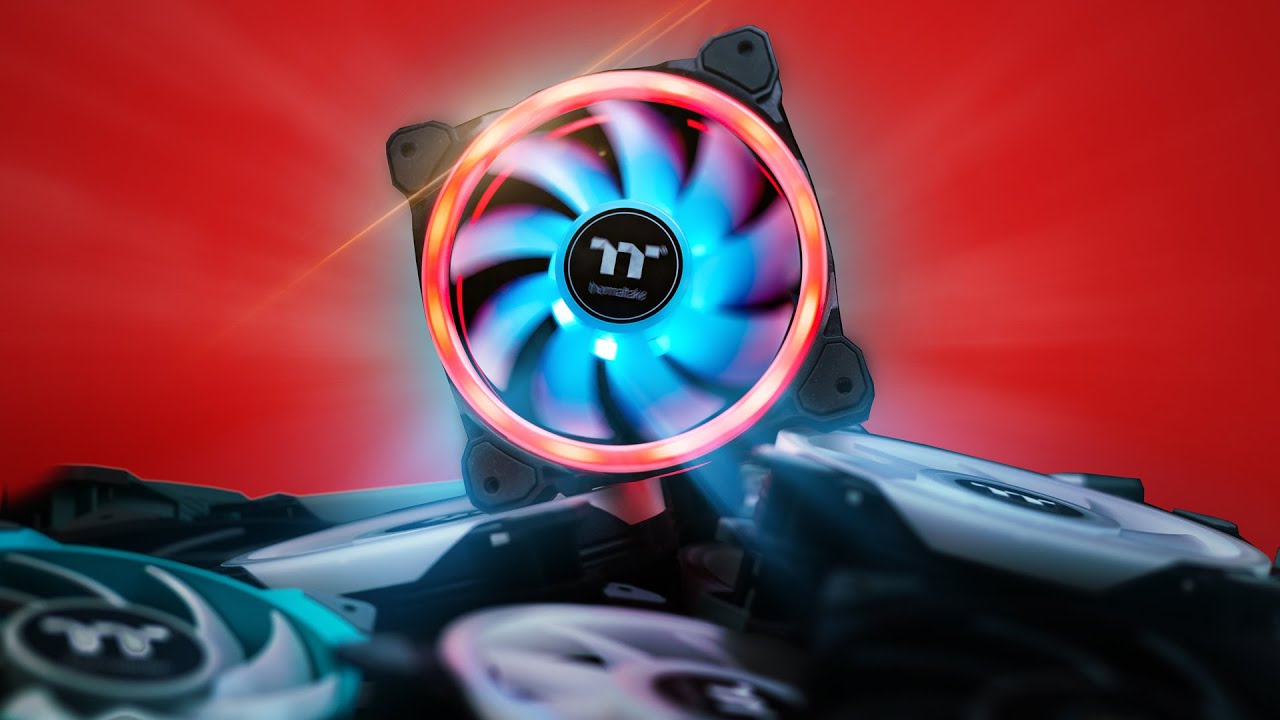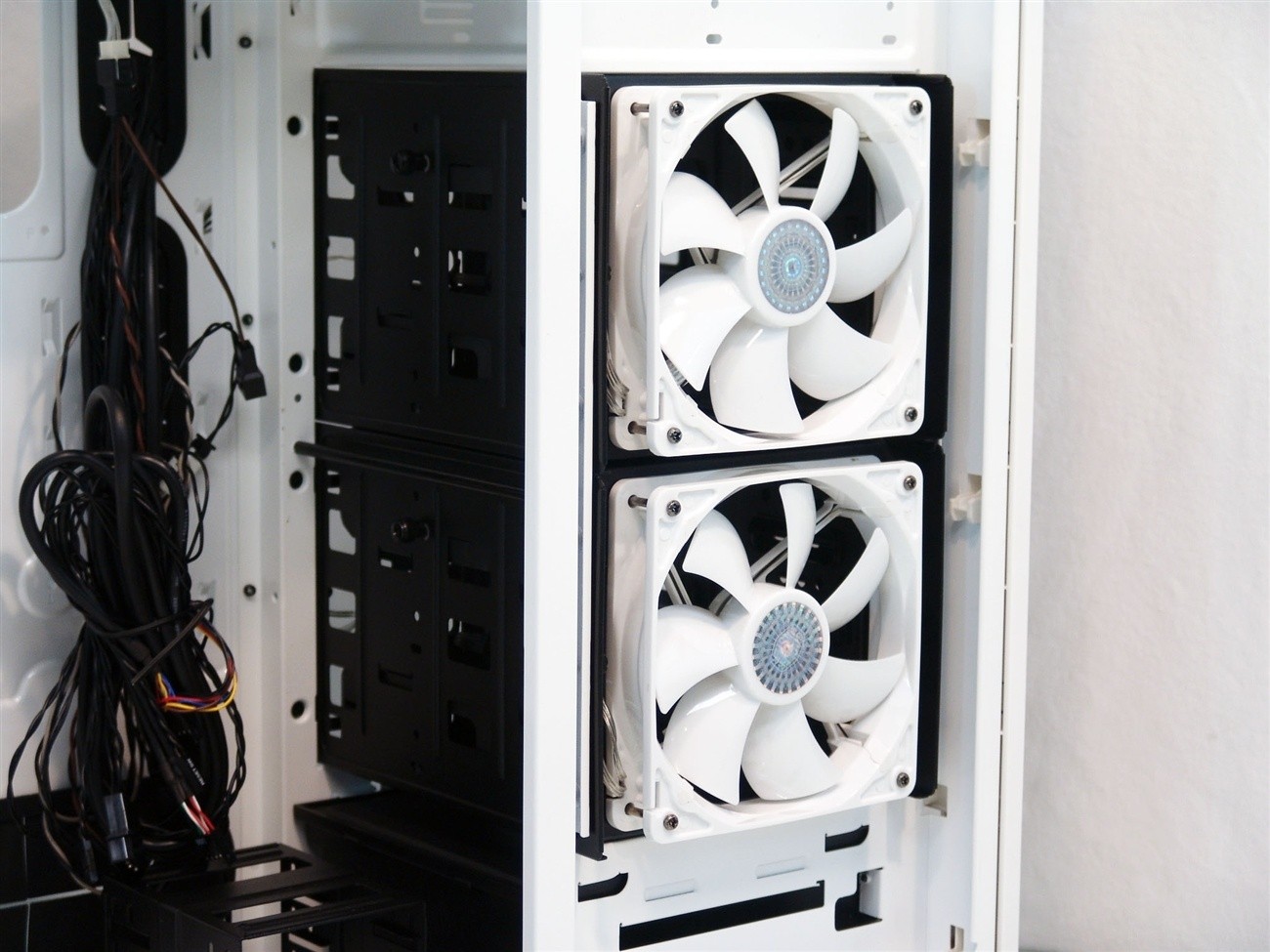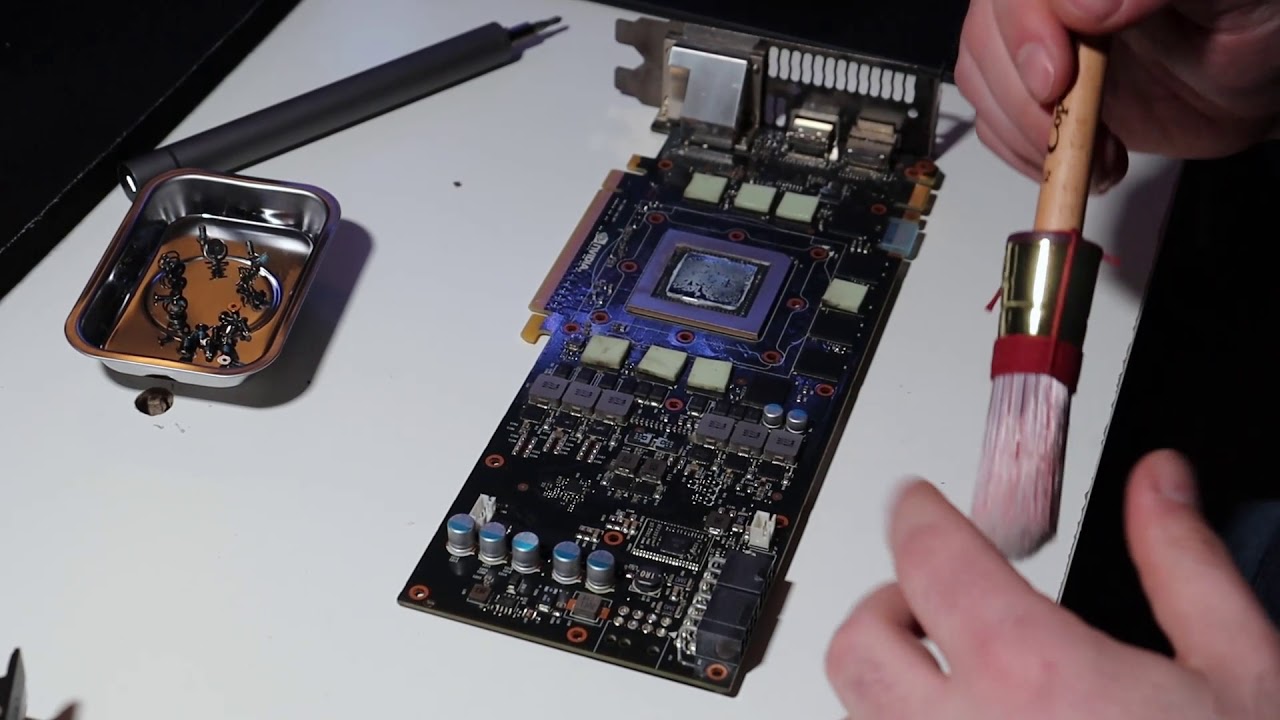Introduction
Welcome to the world of computers and PC building! Whether you are a seasoned technician or a newbie in the tech space, understanding the inner workings of your computer is essential. One crucial component that helps keep your system running smoothly is the case fan. These fans are responsible for maintaining proper airflow and preventing your computer from overheating. However, determining the direction in which a case fan blows can be a bit confusing for some.
In this article, we will guide you through the process of figuring out which way a case fan blows. We will explore various methods to help you identify the direction of airflow without any hassle. So, let’s dive in and unravel the mystery of case fan direction!
Whether you are upgrading an existing system or building a new one, understanding how your case fans work is crucial. Proper airflow is necessary to dissipate heat generated by various components, such as the CPU and GPU, and maintain optimal temperatures within your system.
So, how do you determine the direction of airflow for your case fans? Thankfully, there are several methods that can provide you with the answer. In the following sections, we will explore these methods in detail, so you can confidently set up your case fans for optimal cooling performance.
Understanding Case Fans
Before we dive into determining the direction of airflow for your case fans, let’s take a moment to understand the basic functionality of these essential components. Case fans are installed inside your computer’s chassis to circulate air and remove heat produced by the internal components. They come in various sizes, including 120mm and 140mm, and can be positioned in different areas of the case.
Case fans work by pulling cool air from the outside or pushing warm air out of the case. They typically consist of fan blades, a motor, and a frame. The fan blades rotate when powered on, creating airflow and dissipating heat in the process. The direction of airflow depends on how the fan is positioned and its intended purpose.
It’s important to note that not all case fans are equal. Some models are designed to be intake fans, which pull cool air from the outside and direct it towards the internal components. These fans are usually positioned at the front or bottom of the case. On the other hand, exhaust fans are designed to expel warm air from the case and are commonly mounted at the rear or top of the chassis.
In addition to intake and exhaust fans, you may also come across fans with specific purposes, such as CPU coolers or GPU coolers. These fans are typically positioned directly on top of the processor or graphics card to provide targeted cooling.
Understanding the purpose and positioning of different types of case fans is crucial when it comes to determining their direction of airflow. Once you have a grasp of these fundamentals, you can move on to the methods we will discuss in the following sections to identify the direction in which your case fans blow.
The Direction of Airflow
When it comes to case fans, knowing the direction of airflow is essential for proper setup and optimal cooling performance. There are two main directions of airflow to consider: intake and exhaust.
An intake fan pulls cool air from the outside and directs it towards the internal components of your computer. This helps to keep the components at lower temperatures, allowing them to operate more efficiently. Intake fans are commonly positioned at the front or bottom of the case, where they can draw in fresh air.
On the other hand, an exhaust fan expels warm air from the case, helping to remove heat generated by the internal components. These fans are usually mounted at the rear or top of the chassis, allowing the hot air to escape. By removing the warm air, exhaust fans help to maintain a cooler operating temperature for your system.
To determine the direction of airflow for your case fans, you need to consider their positioning within the case. For example, if a fan is installed at the front of the case, it is most likely an intake fan, as its purpose is to pull in cool air from the outside. Conversely, a fan mounted at the rear or top of the case is likely an exhaust fan, as it is positioned to expel warm air.
It’s important to note that some case fans may have a directional arrow marked on them. This arrow usually indicates the direction of airflow. If you see such an arrow on the fan, follow its guidance to ensure proper installation and airflow direction.
However, not all case fans may have a visible directional arrow. In such cases, you can use alternative methods to determine the direction of airflow, which we will explore in the following sections.
By understanding the direction of airflow for your case fans, you can strategically position them within your computer’s chassis to achieve better cooling and improved performance.
Checking the Fan Label
If you’re unsure about the direction of airflow for your case fans, one of the easiest ways to find out is by checking the fan label. When you purchase a case fan, it typically comes with a label that provides important information about the fan, including its specifications and features.
Look closely at the fan label for any indicators or symbols that can help you determine the direction of airflow. Some fans may have a straightforward arrow or text indicating the intended airflow direction. For example, you might see labels such as “Intake” or “Exhaust” clearly marked on the fan’s label.
In addition to arrows or text, fan labels may also have illustrations depicting the direction of airflow. These illustrations can give you a visual representation of how the fan is meant to operate and the direction in which the air will flow.
If you cannot find any clear indicators on the fan label, take a closer look at the specifications provided. Manufacturers often include information about the fan’s airflow direction in the technical details. Look for terms like “inflow” or “outflow” to get an idea of the intended airflow direction.
However, it’s important to note that not all fans may have easily visible labels or clear markings. In such cases, you can try other methods we will discuss in the following sections to determine the direction in which your case fans blow.
Checking the fan label is a quick and convenient way to find out the direction of airflow for your case fans. Take a few moments to examine the label and look for any arrows, text, symbols, or illustrations that can provide you with the necessary information.
Visual Indicators
When trying to determine the direction of airflow for your case fans, visual observation can be a helpful method. By closely examining the physical design of the fan, you may be able to identify certain visual indicators that can indicate the airflow direction.
One common visual indicator is the shape and orientation of the fan blades. Most case fans have angled or curved blades that are designed to push or pull air in a specific direction. Look closely at the shape and angle of the fan blades. If the blades are curved or angled in a particular way, it can give you a clue as to which direction the air is intended to flow.
Typically, if the blades are angled in a way that appears to scoop or pull air, it suggests that the fan is an intake fan, pulling cool air into the case. On the other hand, if the blades are angled in a way that seems to push or expel air, it indicates that the fan is an exhaust fan, expelling warm air from the case.
Additionally, some fans may have a grille or wire mesh on one side to protect the fan blades. Take note of the position of the grille in relation to the fan. If the grille is on the side facing outside the case, it suggests that the fan is an intake fan, pulling air into the case through the grille. Conversely, if the grille is on the side facing inside the case, it indicates that the fan is an exhaust fan, expelling air from the case through the grille.
While visual indicators can provide valuable insight into the direction of airflow, it’s important to note that they may not be present on all case fans. Different fan models and manufacturers may have variations in their visual design and features. In such cases, you can explore other methods we will discuss in the following sections to determine the direction in which your case fans blow.
By visually examining the fan blades and any accompanying grilles or mesh, you can gain valuable clues about the direction of airflow for your case fans.
Observing the Sticker Position
Another method to determine the direction of airflow for your case fans is to observe the position of any stickers or labels on the fan. Some fans may have a sticker placed on one side, indicating the intended direction of airflow.
Take a close look at the fan and see if there is a sticker present. The sticker may include information such as the fan model number, manufacturer logo, or other details. If the sticker is positioned in a way that it is visible from the outside of the case, it suggests that the fan is an intake fan, pulling air into the case.
Conversely, if the sticker is positioned in a way that it is visible from the inside of the case, it implies that the fan is an exhaust fan, expelling air from the case. Manufacturers often place stickers in a location that is easily visible when the fan is properly installed and facing the right direction.
However, it’s important to note that not all fans may have stickers or labels indicating the direction of airflow. In such cases, you can explore other methods we have discussed earlier, such as visual indicators or checking the fan label, to determine the direction in which your case fans blow.
Observing the sticker position can provide a quick clue about the direction of airflow for your case fans. Take a moment to inspect the fan and see if a sticker is present, and note its position in relation to the fan’s installation direction within the case.
Feeling the Airflow
One practical and straightforward method to determine the direction of airflow for your case fans is to physically feel the airflow. By using your hand or a piece of paper, you can assess the direction in which the air is moving.
First, make sure your computer is powered on and the case fans are running. Carefully place your hand near the fan, close enough to feel the airflow. Pay attention to the direction in which you feel the air moving. If you feel a gentle breeze or airflow pushing towards you, it indicates that the fan is an intake fan, pulling air into the case.
On the other hand, if you feel airflow pushing away from you or a warm breeze, it suggests that the fan is an exhaust fan, expelling air from the case. Moving your hand closer or farther away from the fan can help you assess the intensity of the airflow and confirm its direction.
If you prefer a more visual and tangible test, you can also use a piece of paper. Hold the paper near the fan and observe its movement. If the paper is drawn towards the fan, it signifies an intake fan, pulling air towards it. Conversely, if the paper is blown away or pushed by the fan, it indicates an exhaust fan, pushing air away.
Feeling the airflow or using a piece of paper as a visual indicator can help you determine the direction in which your case fans blow, even if there are no visible markings or labels. It’s a simple method that allows you to physically experience the airflow and make an accurate assessment of the fan’s direction.
Remember to exercise caution while performing this test, as case fans can be spinning at high speeds. Use gentle movements and avoid placing your hand or any objects too close to the moving fan blades to prevent any accidents.
Using a Piece of Paper
If you’re looking for a simple and visual way to determine the direction of airflow for your case fans, using a piece of paper is a handy method. This method allows you to observe the movement of the paper in response to the fan’s airflow.
To begin, ensure that your computer is powered on and the case fans are running. Take a small piece of paper, such as a sticky note or a small sheet of printer paper, and hold it near the fan that you want to determine the airflow direction for.
Hold the paper close enough to the fan, but not too close that it interferes with the spinning blades. Observe the movement of the paper as the fan blows air. Depending on the direction of airflow, the paper will react in a specific way.
If the paper is drawn towards the fan and sticks to it, it indicates that the fan is an intake fan, pulling air towards it. The suction caused by the intake airflow will cause the paper to move towards the fan.
Conversely, if the paper is blown away or pushed by the fan, it suggests that the fan is an exhaust fan, pushing air away from it. The force of the airflow will cause the paper to be blown away from the fan.
By using a piece of paper, you can visually observe the movement and direction of the airflow. This method is particularly useful when other indicators or labels are not present or easily visible.
Remember to exercise caution while using a piece of paper near the fan. Ensure that the paper is held securely and does not come into direct contact with the fan blades to avoid any damage or accidents.
Using a piece of paper as an indicator is a quick, easy, and inexpensive way to determine the direction of airflow for your case fans. Give it a try, and you’ll have a clear understanding of how your fans are operating!
Summing Up
Understanding the direction of airflow for your case fans is crucial for maintaining optimal cooling performance and preventing overheating in your computer system. In this article, we explored various methods to help you determine the airflow direction.
We started by discussing the importance of understanding case fans and their function within your computer. We learned that case fans can be either intake fans, which pull cool air into the case, or exhaust fans, which expel warm air from the case.
We then explored several methods to determine the direction of airflow. Checking the fan label for arrows, text, or illustrations is a convenient way to find out the intended airflow direction. Visual indicators such as the shape and orientation of the fan blades or the position of any stickers can also provide clues.
We also discussed practical methods like feeling the airflow with your hand or using a piece of paper to observe the movement in response to the fan’s airflow. These methods allow you to physically experience and visually assess the direction of airflow.
Remember, it’s important to consider the positioning and purpose of the fans within your case to accurately determine their airflow direction.
By utilizing the methods discussed in this article, you can confidently set up your case fans for optimal cooling performance and ensure that your computer system remains cool and stable.
Now that you know how to identify the direction of airflow for your case fans, it’s time to put this knowledge into practice. Enjoy a well-cooled and efficient computer system!







